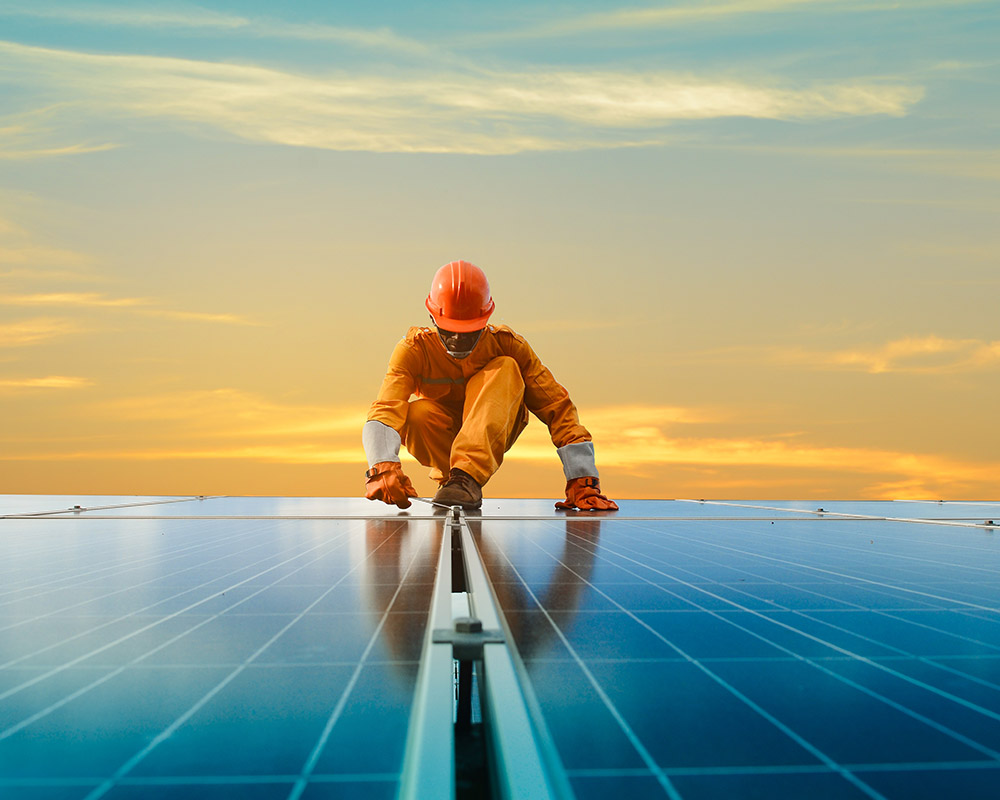
Types of renewable energy and why they are important
Types of renewable energy and why they are important
All about renewable energy sources
All about renewable energy sources
When we think of renewable energy sources, we immediately associate them with solar, wind, or hydropower. However, there are other ways to produce and consume renewable energy that contribute to reducing greenhouse gas emissions and advancing decarbonization.
What is renewable energy?
What is renewable energy?
Renewable energy includes those types of energy that are obtained from natural sources (sun, wind, water, and plant or animal biomass). Therefore, their main characteristic is that they're unlimited and do not produce greenhouse gas emissions.
Furthermore, technological advances have made it possible to reduce both the production and maintenance costs of logistics centers, making renewable energy sources increasingly accessible and competitive.
In the complex transition toward a low-emission energy model, energy efficiency and various types of renewable energy play a key role. Together, they can reduce energy-related CO2 emissions by up to 90%, using safe, reliable, affordable, and easily accessible technologies.
There are different ways of producing and consuming energy that contribute to reducing these emissions. Below, we'll look at a list of the different types of renewable energy, classified according to their primary energy sources.
What types of renewable energy are there?
What types of renewable energy are there?
Among the types of renewable energy sources (also called alternative energy) we can find several, mainly:
Solar energy
Solar energy is obtained from solar radiation, or sunlight. There are two types of solar energy:
- Photovoltaic solar energy: Photovoltaic solar panels absorb sunlight and transform it into electricity.
- Thermal solar energy: Thermal collectors absorb and concentrate sunlight to create heat.
Wind energy
Wind energy is obtained from wind through wind turbines that transform the kinetic energy from moving air into electricity.
Depending on the location of the wind farms, there are two types of wind energy:
- Onshore
- Offshore
Hydopower
Hydropower, also known as hydroelectricity, hydropower is the energy generated by transforming the mechanical energy of moving water into electrical power via hydropower plants. The plants themselves can be of various types:
- Hydropower plants with a reservoir
- Run-of-the-river hydropower plants
- Pumped-storage hydropower plants
Geothermal energy
Geothermal energy is obtained by harnessing the heat from within our planet. This energy resource is present everywhere, but it can only be harnessed in locations with specific physical conditions. In the most favorable locations, it can be found naturally in hot springs, geysers, or volcanoes.
Biomass energy
Biomass is any organic matter that can be used as a source of energy, hence its use as bioenergy. Biomass can be used in multiple ways. For example, biogas can be obtained through a biodegradation process produced by microorganisms. Through the use of so-called energy crops (non-food crops), we can also obtain biofuels, whose main characteristic is that they're carbon neutral.
Marine energy
Marine energy, also known as ocean energy, can come in various forms, mainly:
- Tidal energy: Power is produced during the rise and fall of tides
- Wave energy: Power is produced by harnessing the movement of the waves
What are the advantages and characteristics of renewable energies?
- They are environmentally-friendly
Renewable energies can help reduce greenhouse gas emissions, aiding in caring for the environment and curbing global warming. - They are unlimited
As they come from renewable energy sources, they adapt to natural cycles and never run out, contributing to an efficient and sustainable energy system. - They are ndigenous
Renewable energy is generated from natural phenomena, helping to reduce foreign energy dependence. - They are constantly evolving
Constant technological innovation makes renewable energy production increasingly efficient and affordable for the population.
Repsol and renewable energies
Repsol and renewable energies
At Repsol, we are convinced that only by tackling the major energy challenges before us can we turn them into opportunities. As such, we have incorporated all the technologies available in our efforts to reduce emissions from our operations and products, in line with the company's commitment to combating climate change, and renewable energies plays a fundamental role in this whole process.

We drive renewable electricity generation
Renewable energies are among the alternatives that can contribute the most to the decarbonization of the European and Spanish economies in the coming decades.
Electrification is still considered one of the main paths to reduce the carbon footprint. The transportation sector is undergoing a rapid transition, and electric mobility plays a key role, thanks to the continuous improvements in battery range and new ultra-fast charging systems. However, there are still sectors that are somewhat more difficult to decarbonize through this solution, such as road freight transportation, heavy industry, and the aviation and maritime sectors.
In this complex equation, biofuels are also a key ally, offering a choice between various low-carbon technologies that are fully compatible with existing combustion vehicles. Furthermore, they have the added value of boosting the circular economy in Spain by promoting the efficient use and reuse of resources, raw materials, and products throughout their life cycles.
Furthermore other innovative solutions have also emerged in recent years, such as renewable hydrogen, which is also used in the manufacture of synthetic fuels.


